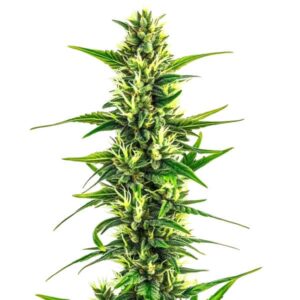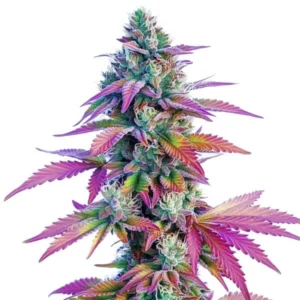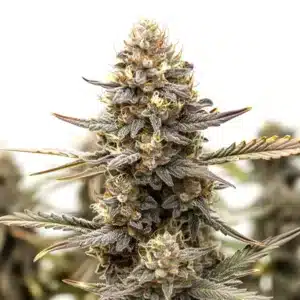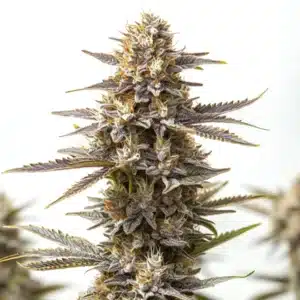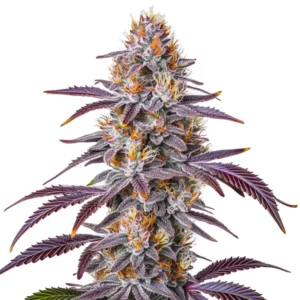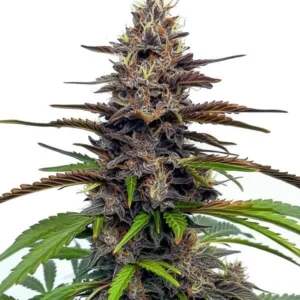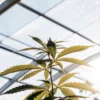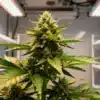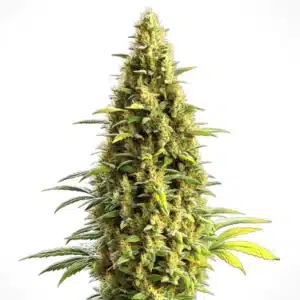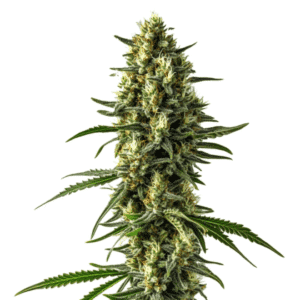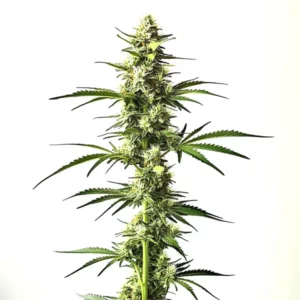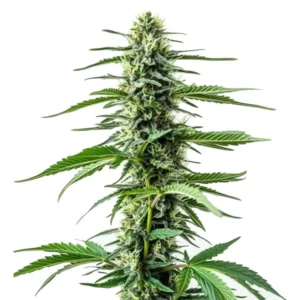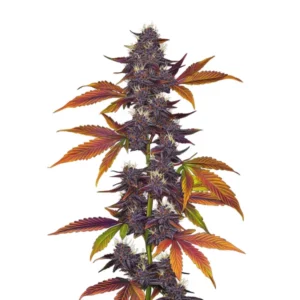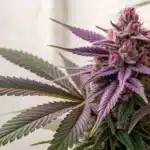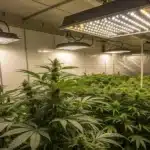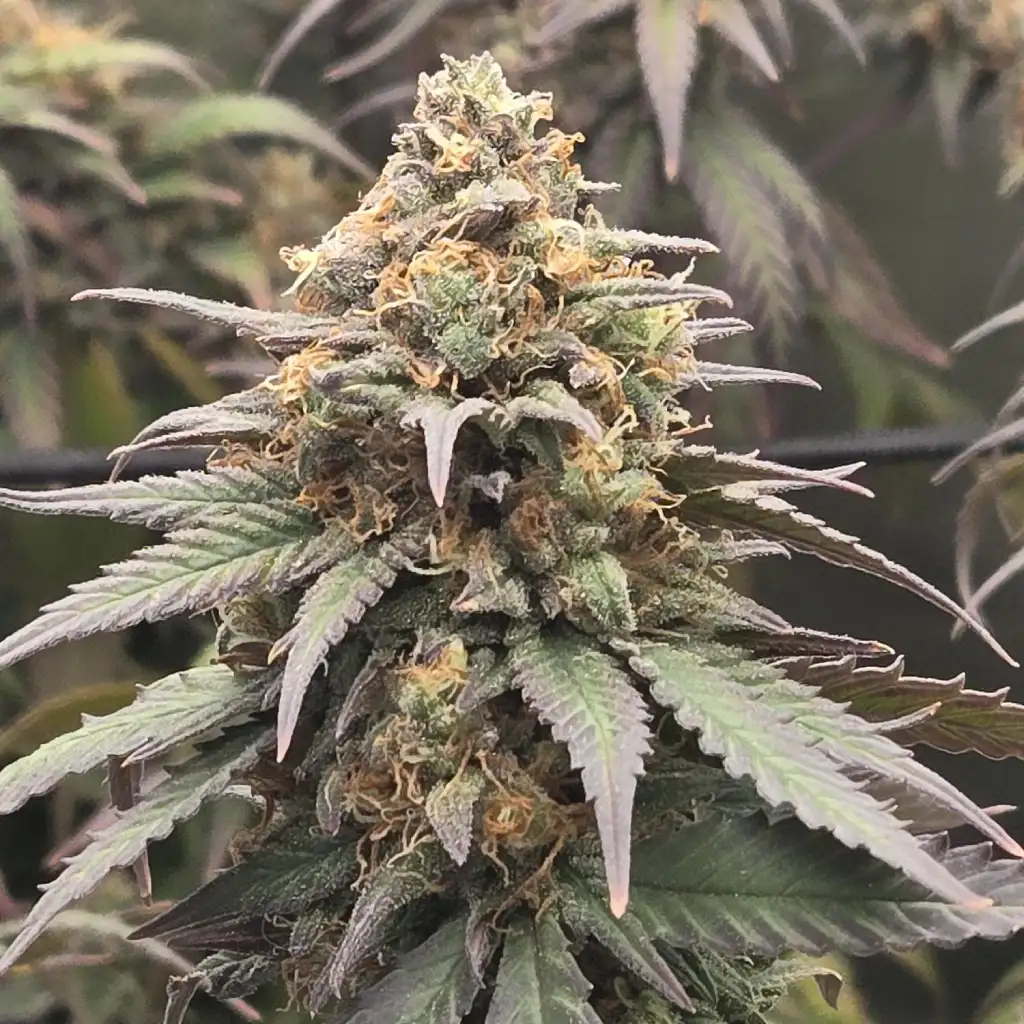
How to Grow Pineapple CBD Auto
Pineapple CBD Auto Description
Pineapple CBD Auto is a highly versatile cannabis strain known for its low THC content, making it ideal for medicinal users seeking relief without intense psychoactive effects. This autoflowering strain is a balanced hybrid created by crossing Pineapple Auto with CBD and Ruderalis genetics. The resulting combination offers a relaxing, uplifting experience, thanks to its high CBD content of up to 12%, while maintaining a manageable THC level of around 6-7%.
The strain’s buds are dense, covered in resinous trichomes, and give off a delightful aroma of tropical fruits. Its terpene profile, dominated by Pinene, Caryophyllene, and Humulene, contributes to its sweet and earthy flavors with notable hints of pineapple and citrus. It delivers calming effects, ideal for managing stress, fatigue, and muscle spasms without overwhelming the user.
Recommended Strains
Auto CBD Pineapple
|
|
CBD | 10% – 12% (Medium) |
|
|
Type | CBD Autoflowering |
|
|
Yield | Low |
|
|
Phenotype | 50% Indica / 50% Sativa |
African x Princess 88
|
|
THC | 18% - 20% (Medium) |
|
|
Type | Feminized |
|
|
Yield | Medium |
|
|
Phenotype | 40% Indica / 60% Sativa |
Promos & Deals
Environmental Requirements for Growing Pineapple CBD Auto
To cultivate this strain successfully, you need to replicate its preferred environment. This autoflowering strain thrives in a variety of conditions but responds particularly well to warm, sunny climates. Indoors, it benefits from a controlled environment with temperatures between 70°F and 80°F (21°C – 27°C) and humidity levels kept between 40-50% to avoid mold during flowering.
It is a forgiving plant, making it suitable for beginners. It is resilient and can tolerate fluctuations in temperature, though maintaining a stable climate ensures better yields. Outdoors, it prefers a sunny spot, but it can also be grown in colder regions with shorter summers due to its rapid flowering cycle.
Whether grown indoors or outdoors, providing good airflow is crucial for preventing mold and pests. Using fans indoors and spacing plants adequately outdoors ensures healthy growth. This strain typically finishes in 8 to 10 weeks, so growers should plan their cultivation schedule accordingly.
Setting Up the Growing Space for Pineapple CBD Auto
Indoor Cannabis Cultivation
Indoor cultivation of this strain offers more control over the growing environment, resulting in higher yields and better-quality buds. A grow tent is recommended, providing an ideal controlled space for your plants. Ensure the grow tent is equipped with LED lights or HPS lamps to deliver at least 18 hours of light per day during the vegetative stage. For optimal growth, maintain a light cycle of 18/6 (18 hours of light and 6 hours of darkness).
In terms of growing medium, it can flourish in soil or hydroponics. For soil growers, using nutrient-rich organic soil is ideal, while hydroponic systems require a careful balance of nutrients and pH levels. Keep the soil’s pH between 6.0 and 6.5 for the best results.
Ventilation is key. Install fans and a carbon filter to maintain airflow and control odors during flowering. Autoflowers tend to be more compact, so ensure there is enough vertical space for growth, but be mindful not to overcrowd your grow tent to prevent stress and nutrient competition.
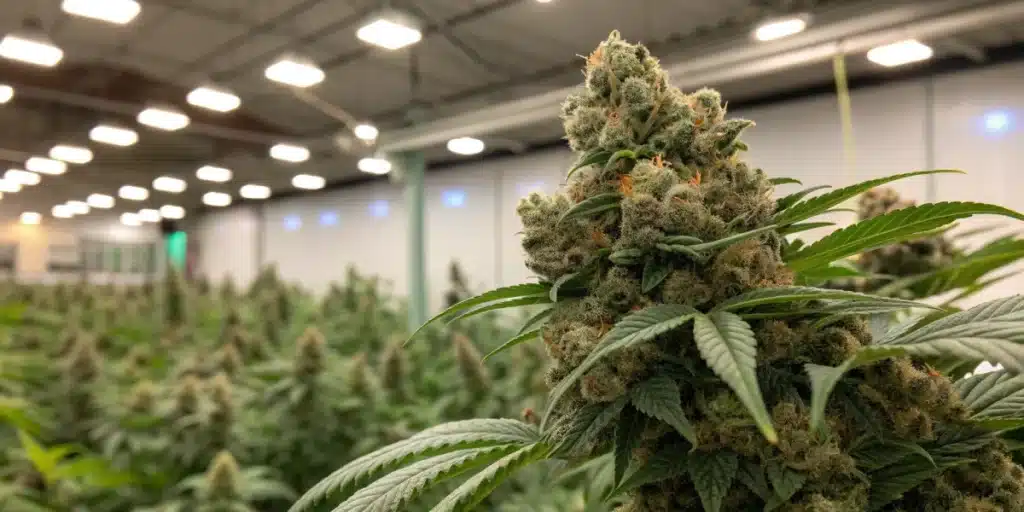
Outdoor Cannabis Cultivation
Growing this strain outdoors offers simplicity, as the plant does not rely on a specific light schedule to trigger flowering. Autoflowers like this strain will automatically transition from the vegetative stage to the flowering stage without the need for light manipulation, making it easier for beginners. Simply plant it in well-draining, nutrient-rich soil and ensure it receives plenty of sunlight.
If you’re growing in cooler climates, consider using a greenhouse to protect the plants from harsh weather conditions. The strain is small to medium-sized, so it can be easily managed in containers, allowing you to move the plants indoors if needed. Make sure the plants receive ample sunlight, ideally 6-8 hours of direct light per day.
When cultivating outdoors, make sure to monitor the soil’s nutrient levels and provide supplements like organic fertilizers or compost tea if necessary. Outdoor plants are more susceptible to pests and diseases, so consider using natural pest control methods and neem oil as a preventive measure.
Propagation and Germination of Pineapple CBD Auto
Germination is the first and most important step when cultivating Pineapple CBD Auto from seed. Follow these steps to ensure a high germination rate and healthy plants:
1. Choose high-quality seeds from a trusted seed bank to guarantee good genetics and feminized seeds.
2. To germinate the seeds, use the paper towel method or soak them in water for 24-48 hours until the taproot emerges. Ensure the temperature is kept between 70°F – 85°F (21°C – 29°C) during germination.
3. Once the seeds sprout, carefully transfer them into small pots filled with lightly fertilized soil or seedling mix. Keep the soil moist but not soggy, as excess moisture can lead to root rot.
4. Ensure the seedlings receive indirect sunlight or low-intensity light for the first few days. Gradually increase the light exposure as the seedlings grow stronger. This plants will be ready for transplantation into larger containers or directly into the soil after they develop several sets of true leaves.
Vegetative Phase of Pineapple CBD Auto
The vegetative phase of this strain is relatively short, as the strain quickly transitions to flowering. However, during this stage, the plant will focus on developing its roots, stems, and leaves. To maximize growth, ensure your plants receive ample light, with at least 18 hours of direct light per day.
Water the plants regularly, but avoid overwatering as this can stunt growth. The key is to let the soil dry slightly between watering. Pineapple CBD Auto also responds well to low-stress training (LST), which involves bending the branches to create an even canopy. This technique maximizes light exposure to all parts of the plant, leading to better yields.
Feeding during the vegetative phase should include a nitrogen-rich fertilizer, as nitrogen is crucial for healthy leaf and stem development. Monitor the plants for any signs of nutrient deficiencies, such as yellowing leaves, and adjust the feeding regimen as needed.
Flowering Phase of Pineapple CBD Auto
The flowering phase of this strain is the most exciting part of the growth cycle. During this stage, the plant begins to produce the aromatic, resin-covered buds that are characteristic of the strain. The flowering period typically lasts 8 to 10 weeks, with most plants ready for harvest in this timeframe.
During flowering, reduce humidity levels to around 40-50% to avoid mold growth. Additionally, continue providing sufficient light, but switch the light spectrum to a warmer (red) spectrum if using adjustable LED grow lights. Ensure that your plants are receiving adequate airflow to prevent moisture buildup on the buds.
In terms of nutrients, switch to a bloom fertilizer that is higher in phosphorus and potassium. These nutrients support flower development and resin production. Pineapple CBD Auto’s yields range from 450 to 500 grams per square meter indoors, with outdoor plants offering up to 50-100 grams per plant, depending on environmental conditions.
Cannabis Fertilization and Nutrition
Proper nutrition is essential for the successful growth of Pineapple CBD Auto. During the vegetative stage, the plant requires higher levels of nitrogen to support leaf and stem development. As it transitions to flowering, switch to a bloom fertilizer that provides phosphorus and potassium for bud development.
Autoflowering strains like this are generally more sensitive to nutrient levels, so avoid overfeeding. Start with half the recommended dose and observe how the plants react before increasing the amount. Monitor pH levels in the soil or hydroponic solution to ensure optimal nutrient uptake. The ideal pH range for soil-grown plants is 6.0-6.5, while hydroponic setups require a pH of 5.5-6.0.
Flushing the plants with pure water during the final two weeks of the flowering stage is crucial to remove any excess salts and nutrients, which can affect the taste and smoothness of the final product.
Pest and Disease Control for Growing Cannabis
While Pineapple CBD Auto is relatively resistant to pests and diseases, it’s not immune. To avoid common issues like spider mites, aphids, and powdery mildew, implement preventative measures throughout the grow cycle.
Maintain a clean grow environment by removing dead leaves and plant debris. In addition, proper ventilation is key to preventing mold and mildew, especially during the flowering stage. If pests are detected, consider using organic pesticides such as neem oil or insecticidal soap. Introducing beneficial insects like ladybugs or predatory mites can also help control pest populations naturally.
Harvesting and Curing for Cannabis Growing
Harvesting this strain at the right time ensures you capture its full cannabinoid and terpene profile. To determine the optimal harvest time, examine the trichomes on the buds with a magnifying glass or microscope. When most trichomes are cloudy with a few turning amber, it’s time to harvest for maximum potency and flavor.
Use sterilized scissors or shears to cut the branches, handling the buds carefully to avoid damaging the resinous trichomes. After trimming, hang the branches upside down in a dark, well-ventilated room with a temperature of around 60-70°F (15-21°C) and humidity levels of 50-60% for drying. The drying process usually takes 7-10 days.
Once the buds are dry to the touch and the stems snap instead of bend, it’s time to cure. Place the dried buds into airtight glass jars, filling them about two-thirds full to allow airflow. Store the jars in a cool, dark place, and open them daily during the first week to release excess moisture. Curing enhances the flavor and smoothness of the buds, with the process typically taking 2-4 weeks.
Is Pineapple CBD Auto Indica or Sativa?
It is a hybrid strain with balanced effects of both Indica and Sativa genetics. This autoflowering strain delivers the relaxation and calming properties typically associated with Indica varieties, while also providing the uplifting and euphoric effects commonly found in Sativa strains.
While its Indica traits make it great for relaxation and stress relief, its Sativa lineage keeps users feeling uplifted and creative, making it suitable for both day and nighttime use. This well-balanced hybrid makes Pineapple CBD Auto a versatile strain for users looking to medicate without being overwhelmed by heavy sedative effects.
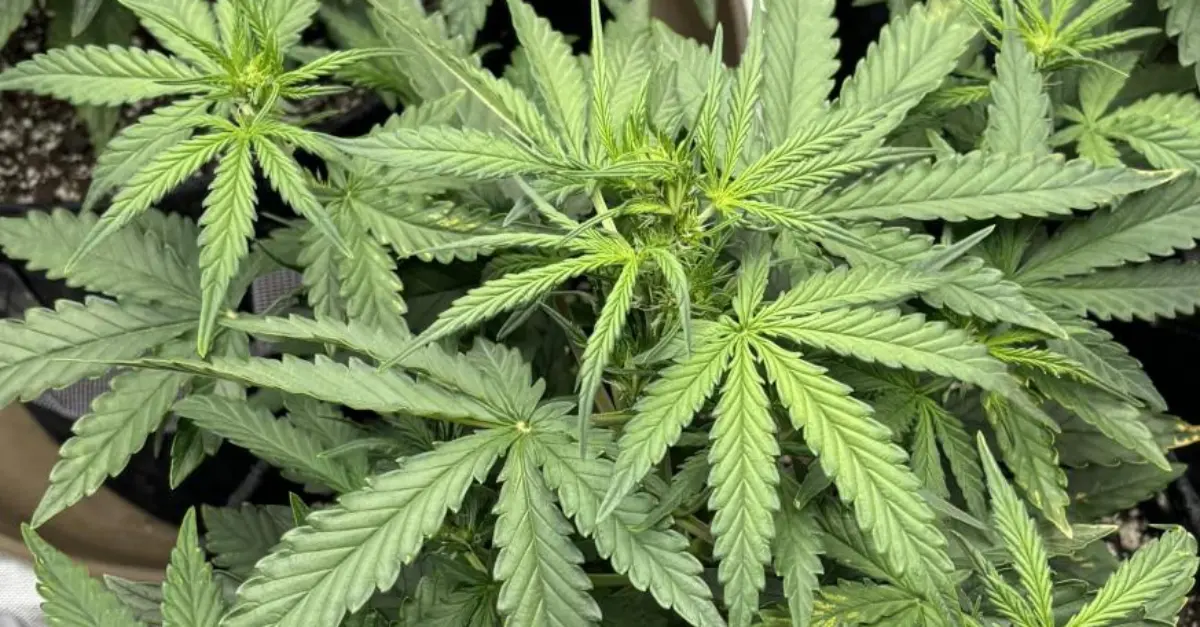
Advantages of Growing Pineapple CBD Auto
There are many advantages to growing Pineapple CBD Auto, particularly for novice growers and those seeking a fast-growing, low-maintenance strain:
- Autoflowering nature means no need to manipulate light cycles.
- Short flowering time of 8-10 weeks, making it suitable for fast harvests.
- High CBD content (up to 12%), making it ideal for medicinal users looking for pain relief and relaxation without heavy psychoactive effects.
- Low THC (6-7%), which makes it suitable for daytime use without the risk of intense psychoactive effects.
- Compact size, making it ideal for indoor growing in smaller spaces or discreet outdoor cultivation.
Disadvantages of Growing Pineapple CBD Auto
Although it is generally easy to grow, there are a few potential challenges to be aware of:
- Lower yields compared to photoperiod strains due to its autoflowering genetics.
- Sensitivity to nutrient overfeeding, requiring careful monitoring of fertilizer dosages.
- Plants may require support during flowering to prevent branches from bending under the weight of the buds.
Why Buy Pineapple CBD Auto
Pineapple CBD Auto is a perfect choice for growers and users looking for a medicinal strain with low THC content and high CBD levels. It’s ideal for those who want to experience the therapeutic benefits of cannabis without strong psychoactive effects. The strain’s sweet, tropical flavors, combined with its balanced effects, make it a favorite for both beginners and experienced users alike.
Pineapple CBD Auto also stands out due to its ease of cultivation and fast flowering time, making it an attractive option for growers who want a quick turnaround. With high resistance to pests and diseases, it’s a low-maintenance strain that still delivers high-quality buds, rich in CBD.
Common Problems in Growing Pineapple CBD Auto
Though Pineapple CBD Auto is generally robust and easy to grow, some common issues growers might encounter include:
1. Nutrient Sensitivity: Autoflowering strains, including this, can be more sensitive to nutrients, especially during the flowering stage. Overfeeding can lead to nutrient burn, causing the leaves to curl or develop brown spots.
2. Pests: Despite its resilience, outdoor-grown plants may attract pests such as spider mites or aphids. Regular monitoring and using organic pest control methods can prevent infestations.
3. Overwatering: Pineapple CBD Auto does not respond well to overwatering, so it’s important to let the soil dry out between waterings to prevent root rot.
4. Mold and Mildew: High humidity during the flowering phase can lead to mold or mildew. Maintain proper airflow and reduce humidity levels to prevent these issues.
Similar Strains to Pineapple CBD Auto
- Auto CBD White Widow: Another autoflowering strain with balanced CBD to THC ratios, known for its medicinal properties and ease of growth.
- Auto CBD Amnesia: A high-CBD strain with low THC levels, offering uplifting and relaxing effects with a fruity, lemony aroma.
- Auto CBD Med Go: A compact, easy-to-grow strain with high CBD content, making it perfect for medicinal use and small growing spaces.
Tips for Professional Growers
Professional growers looking to maximize yields and quality from Pineapple CBD Auto can benefit from the following tips:
- Optimize Lighting: While autoflowers don’t rely on light schedules, increasing the light intensity with high-quality LEDs can significantly boost yields. Aim for 18-24 hours of light per day to encourage faster growth.
- Controlled Nutrients: Stick to light feeding schedules during the vegetative phase and gradually increase nutrients during flowering. Autoflowers are more sensitive to overfeeding, so it’s better to underfeed than risk nutrient burn.
- Low-Stress Training (LST): Apply LST techniques during the vegetative stage to increase bud sites and improve light penetration. This will help create a more even canopy and improve overall yields.
- Monitor Humidity: During flowering, lower humidity levels to 40-50% to prevent mold, especially in dense bud structures.
FAQs
How long does Pineapple CBD Auto take to flower?
This flowers in 8-10 weeks, making it one of the faster autoflowering strains. This rapid growth cycle makes it ideal for growers looking for quick harvests.
What is the THC content of Pineapple CBD Auto?
The THC content of this strain is relatively low, ranging between 6-7%. This makes it ideal for users seeking therapeutic benefits without the strong psychoactive effects.
What are the medical benefits of Pineapple CBD Auto?
Pineapple CBD Auto is known for its high CBD content, which makes it effective for relieving stress, fatigue, muscle spasms, and anxiety. Its low THC content ensures users can benefit from its medicinal properties without feeling overly sedated.


